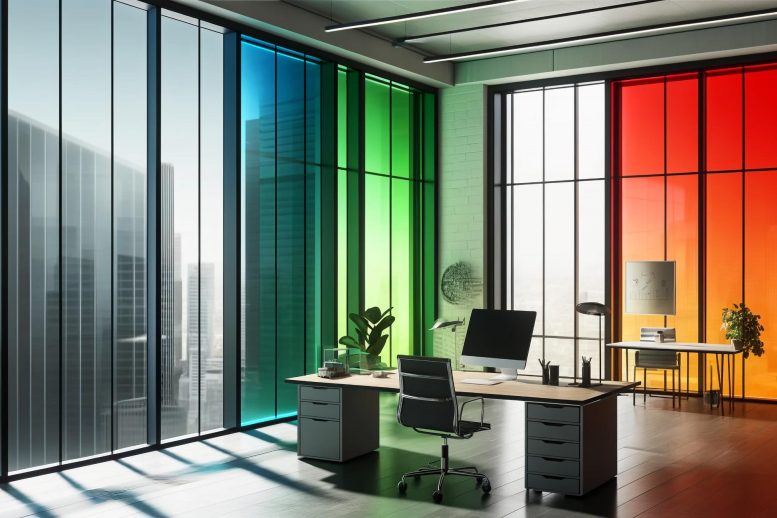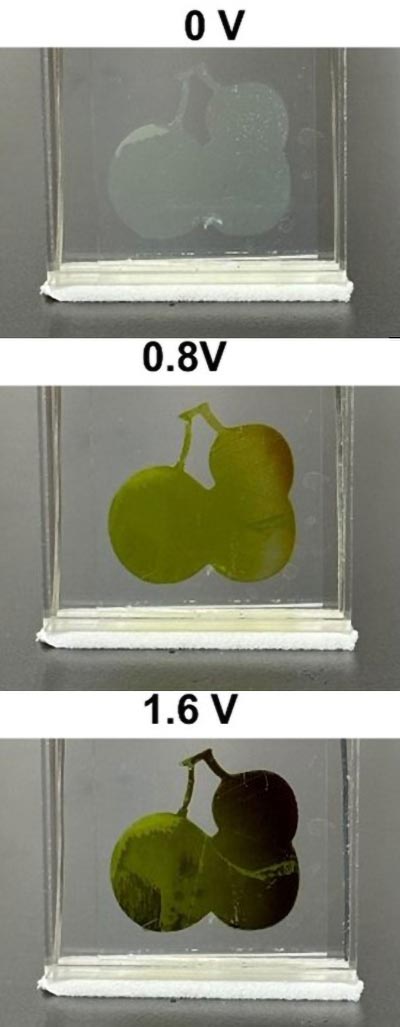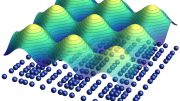
Researchers have developed a new type of electrochromic film using metal-organic frameworks (MOFs) that switches colors rapidly to control light and heat transmission. This film can transition between colorless, green, and red states with simple voltage changes, holding potential for use in smart windows and other intelligent devices. Credit: SciTechDaily.com
A new electrochromic film using MOFs quickly switches colors for effective light and heat management, showing promise for smart windows and other adaptive technologies.
Advances in electrochromic coatings may bring us closer to environmentally friendly ways to keep inside spaces cool. Like eyeglasses that darken to provide sun protection, the optical properties of these transparent films can be tuned with electricity to block out solar heat and light. Now, researchers in ACS Energy Letters report demonstrating a new electrochromic film design based on metal-organic frameworks (MOFs) that quickly and reliably switch from transparent to glare-diminishing green to thermal-insulating red.

This electrochromic film’s color and optical properties change when the electric potential goes from 0 to 0.8 to 1.6 volts: Green helps reduce glare, and red enhances thermal insulation. Credit: Adapted from ACS Energy Letters 2024, DOI: 10.1021/acsenergylett.4c00492
Innovations in MOF-Based Electrochromic Films
Hongbo Xu and colleagues used MOFs in their electrochromic film because of the crystalline substances’ abilities to form thin films with pore sizes that can be customized by changing the length of the organic ligand that binds to the metal ion. These features enable improved current flow, more precise control over colors, and durability.
In demonstrations, Xu’s MOF electrochromic film took 2 seconds to switch from colorless to green with an electric potential of 0.8 volts, and 2 seconds to switch to dark red with 1.6 V. The film maintained the green or red color for 40 hours when the potential dropped, unless a reverse voltage was applied to return the film to its transparent state.
The film also performed reliably through 4,500 cycles of switching from colored to clear. With further optimization, the researchers say their tunable coatings could be used in smart windows that regulate indoor temperatures, as well as in smaller scale intelligent optical devices and sensors.
Broader Developments in Electrochromic Technologies
In addition to Xu’s MOF-based electrochromic film, several other research groups have reported electrochromic coating designs, including a UV-blocking but visually transparent radiative cooling film, a colorful plant-based film that gets cooler when exposed to sunlight, and a temperature-responsive film that turns darker in cold weather and lighter when it’s hot.
Reference: “Biphenyl Dicarboxylic-Based Ni-IRMOF-74 Film for Fast-Switching and High-Stability Electrochromism” by Xueying Fan, Shen Wang, Mengyao Pan, Huan Pang and Hongbo Xu, 29 May 2024, ACS Energy Letters.
DOI: 10.1021/acsenergylett.4c00492
The authors acknowledge funding from the National Natural Science Foundation of China, Natural Science Foundation of Heilongjiang Province, and the Scientific Research Startup Project of Quzhou University.









As a young lady about 55 years ago Corning Glass advertised an opaque lcd window. I regularly received updated science periodicals in the mail as a gift from grandparents. I sense that we are more than half a century behind from research to production in most everything.
Thank my lucky stars…spellcheck changed lad to lady.